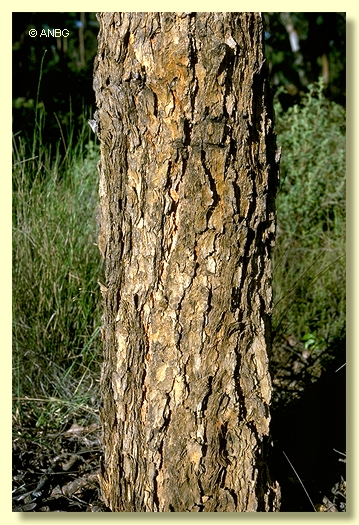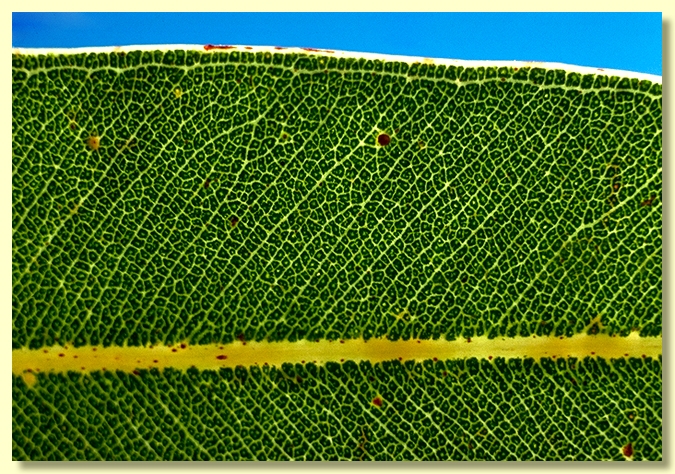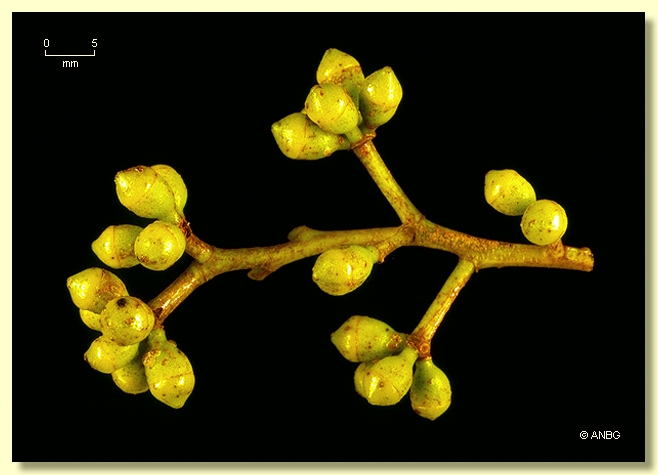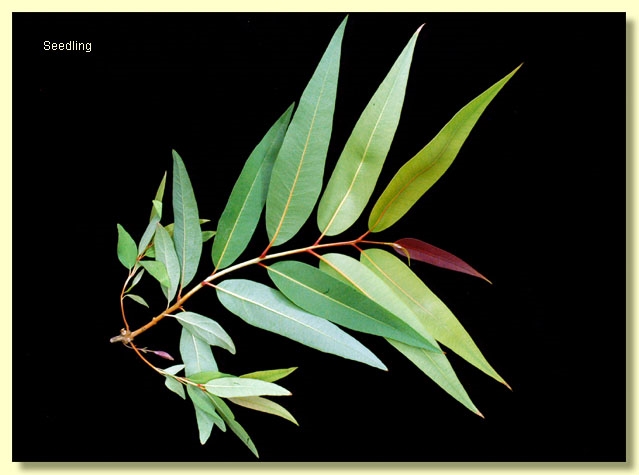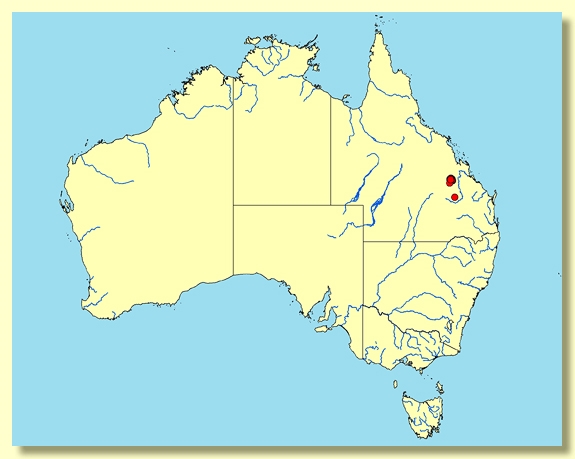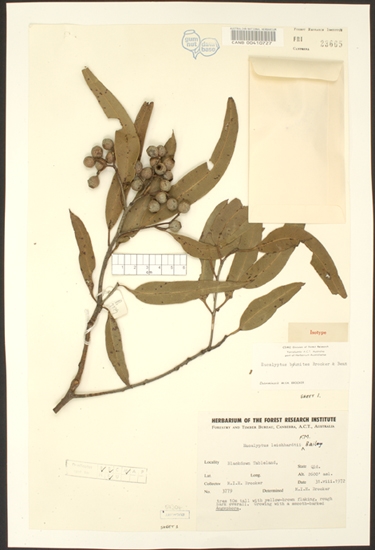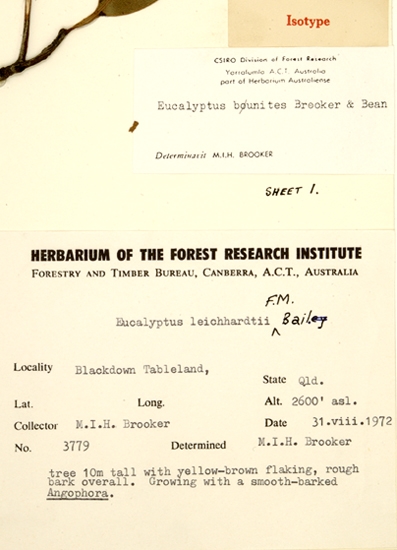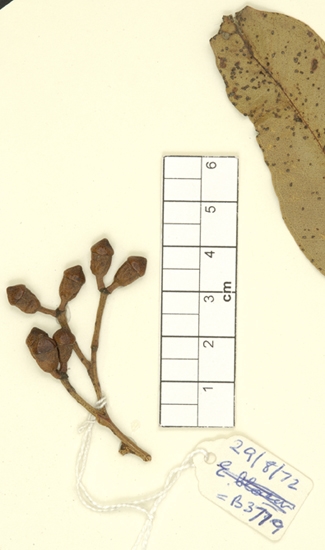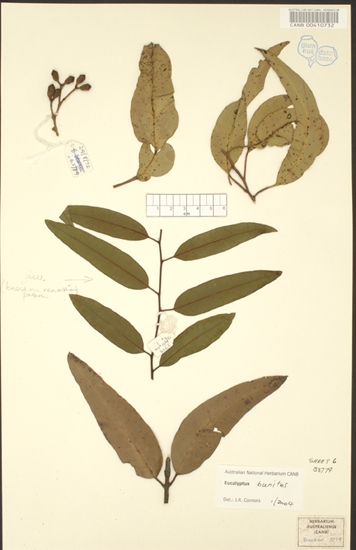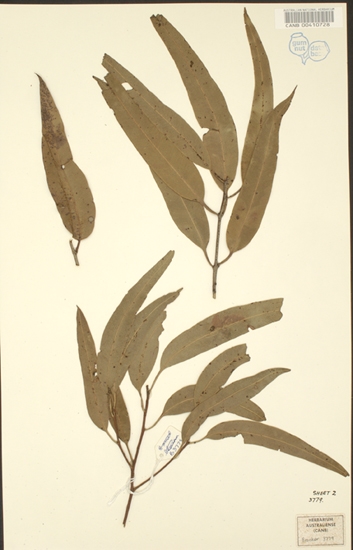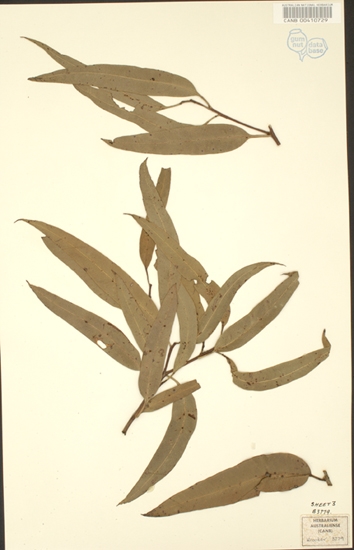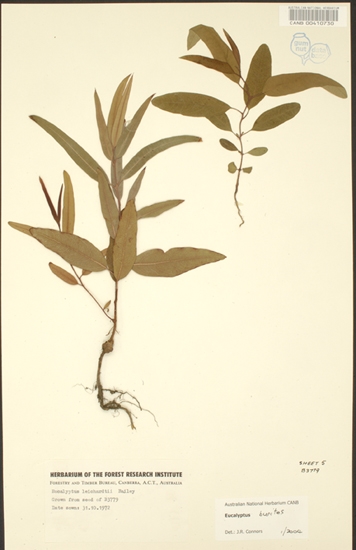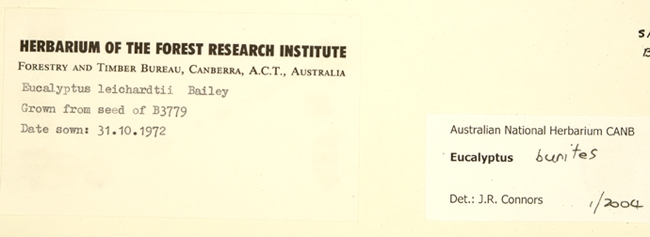Euclid - Online edition
Corymbia bunites
Corymbia | Ochraria
Corymbia bunites (Brooker & A.R.Bean) K.D.Hill & L.A.S.Johnson, Telopea 6: 373 (1995).
Tree to 25 m tall. Forming a lignotuber.
Bark rough to the small branches, thick, soft, tessellated to loosely flaky, yellow-brown to yellow-grey or orange-brown.
Branchlets smooth (glabrous); have ± elongated oil ducts in the pith.
Juvenile growth (coppice or field seedlings to 50 cm): stem rounded to square in cross-section, setose to scabrid until plants are ca 0.3–0.4 m tall then smooth; juvenile leaves always petiolate, alternate, ovate to lanceolate, (6.5)8–15(22) cm long, 2–3.5(5) cm wide, base rounded at lower nodes then tapering (never peltate), apex pointed, green and glossy to grey-green and dull, lamina glabrous but a few bristle-glands present on some petioles.
Crown entirely of glabrous Adult leaves; leaves alternate (occasional pairs sub-opposite), petiole 1–2.6 cm long; blade lanceolate or falcate, 7.3–20 cm long, 1.2–3.5(4) cm wide, flat, base tapering to petiole, apex finely pointed, margin entire, concolorous, dull grey-green in southern populations, slightly glossy green in northern populations, penniveined, densely to very densely reticulate, intramarginal vein parallel to and just within margin, oil glands island, small, numerous.
Inflorescence terminal compound, peduncles 0.5–2.5 cm long, buds 7 per umbel, sessile or pedicels to 0.4 cm long. Mature buds obovoid (ca 0.7 cm long, 0.5 cm wide), scar present (outer operculum shed early), rounded and apiculate or umbonate, or conical, stamens inflexed, anthers ± oblong, versatile, dorsifixed, dehiscing by longitudinal slits (non-confluent), style long, stigma tapered, locules 3, the ovules arranged in 5 ± vertical rows on the placentae. Flowers white.
Fruit sessile or pedicellate (pedicels to 0.4 cm), barrel-shaped to urceolate or truncate-globose, 0.8–1.2 cm long, 0.7–1.1 cm wide, disc descending, valves 3, enclosed.
Seeds brown to reddish brown and shiny, 3–6 mm long, boat-shaped with a keel on the smooth and usually cracked dorsal surface, not winged but some seeds have a short flange at one end, hilum ventral.
Cultivated seedlings (measured at ca node 10): cotyledons reniform to orbicular; stems rounded to square in cross-section, setose until ca node 6 to 9 then becoming smooth; leaves always petiolate, opposite until ca node 4 or 7 then alternate, lower leaves ovate becoming lanceolate, 8–20 cm long, 1–5 cm wide, base rounded to tapering, never peltate, margin entire, apex pointed, lower leaves dull becoming slightly glossy up stem, mid-green, only lower leaves sparsely setose on both sides, glabrous after ca node 5 to 9.
Flowering time unknown.
Tall tree of restricted and discontinuous distribution in central Queensland, found on Blackdown Tableland west of Rockhampton, and on Expedition and Shotover Ranges, as a component of dry sclerophyll forest on ridges and steeper slopes, preferring sandy soils over sandstone. Corymbia bunites has rough thick flaky to tessellated yellowish bark on trunk and branches, a green crown of glabrous lanceolate leaves, buds in terminal inflorescences, and predominantly glabrous and always non-peltate juvenile leaves.
C. bunites can be distinguished from other species of yellow bloodwood by the complete absence of peltate leaf bases in seedling, juvenile or coppice growth, and the virtual absence of hairs or scabridity from the juvenile leaf lamina, though some hairs may be present on stems to ca 40 cm tall. C. bunites has much smaller buds and fruit than both subspecies of C. watsoniana, whilst C. leichhardtii has buds with a whitish (rubbery) cuticle on the buds and scabrid, peltate juvenile leaves. Other yellow bloodwood species are geographically well separated from the distribution of C. bunites.
MORE ABOUT CORYMBIA
MORE ABOUT YELLOW BLOODWOODS
Corymbia bunites: Latinized Greek bounites, hill dweller.


